 Making a Sheep Movie
Making a Sheep Movie |
|
Sunday, 17 August 2008
IBEX Incorporated (www.ibexpuppetry.com) and Hands In Art, Inc. teamed up in 2008 to bring you the innovative short puppet film, The Sure Sheep. Based on the success of John Kennedyís Northlight book, Puppet Planet, and its puppet making project, The Sweatshirt Sheep, Heather Henson suggested the collaboration specifically to join her collection of short films entitled Handmade Puppet Dreams for Kids.
The premiere of Johnís film was at the Smithsonianís Discovery Theater (www.discovertheater.org) on October 3rd and 4th, 2008. The Smithsonian hosted the film screening of Heather Hensonís Handmade Puppet Dreams for Kids to celebrate a new generation of puppet artists and the final weekend of the Jim Hensonís Fantastic World exhibit which was on display at the International Gallery. After the screening on October 4th the audience was treated to a special Sweatshirt Sheep workshop (http://discoverytheater.com/shows/oct/puppet_making.shtm).
John Kennedy was on hand to lead the workshop and present The Sure Sheep as his directorial debut. Also debuting in the same film were a few innovative puppet techniques that John developed for many years.
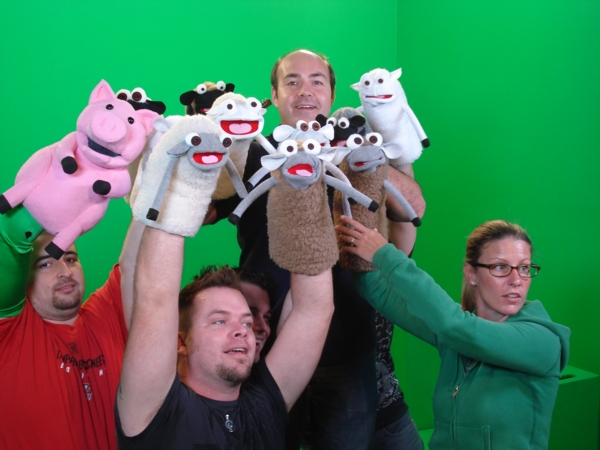 |
One process involves a new puppet skin technique which enables foam sculptors to paint and detail a flexible latex skin directly on a finished foam puppet head. The human characters in the film have this skin and John has discovered it as a great way to build latex puppets with deep undercuts that would be difficult to achieve with a molded clay sculpture. |
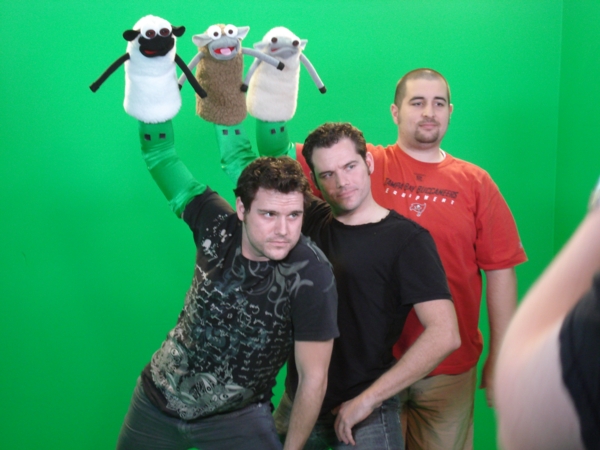 |
Another innovation is the addition of legs on the sheep in the film. These are not cleverly concealed leg rods moving these sheep around, but computer animated legs that are tracked in each shot to give John a new freedom in directing his puppets. Conventional puppet films have always had to be storyboarded around the fact that a puppeteer is always under or around his puppet, making each shot difficult to achieve. In this world of computer generated characters, Johnís new puppet style has a shot at competing with other high-end computer animated productions at a fraction of the time and cost. This style also brings back a soft look that has been missing since the early days of Rankin / Bass stop-motion productions. John has enlisted the talents of animator and film director Patrick Algermissen to perfect this tracking technique that Kennedy has been dreaming of. |
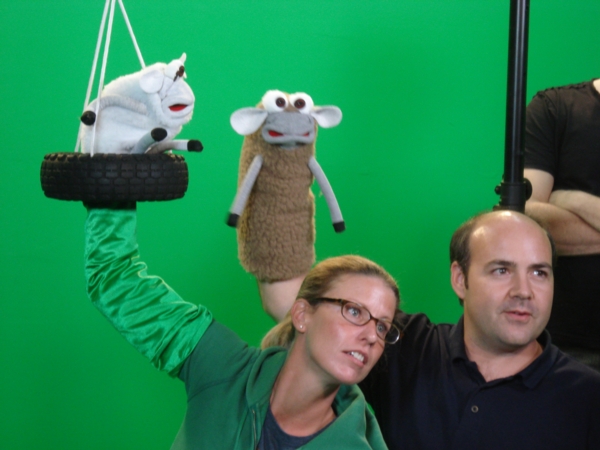 |
Another product of their collaboration has been the computer manipulation of miniature sets. John Kennedy, along with his artistic director Nicole Wilder, have been designing miniaturized set pieces which have been digitized and realized in a virtual program by Patrick which enables John to control how an audience views the world in the film. Patrick can carefully place any set piece, texture, or flat art work in the set he creates and compose shots that are required in John Kennedyís story. John can then direct the scenes and characters and have Patrick tweak any aspect of the film. Bring in the full body computer animated aspect of the charactersí performances and the audience gets the experience of viewing a computer animated world with real time acting and real visual textures. John Kennedy hopes this will be the beginning of a resurgence of puppetry in film. |
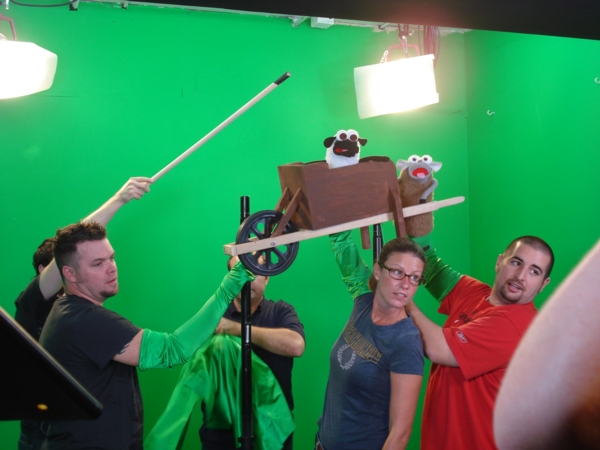 |
The history of these advancements goes back over a decade. John Kennedy and his Hands In Art Dream Team have been brainstorming about giving legs to puppets since 1995 and are excited that the technology has met up with their vision. It was during the production of the Orlando UPN affiliate TV show, Wild TV, that the partners first experimented with putting legs on puppets and compositing their puppet characters into public domain cartoons from their office at Universal Studios Florida. |
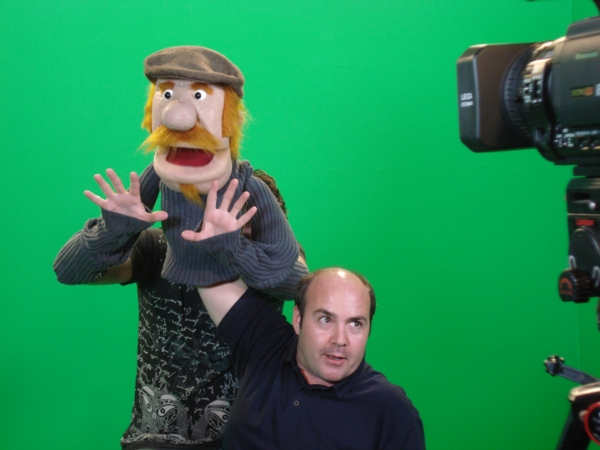 |
They had seen the huge technological leap made by Steven Spielbergís very popular movie Jurassic Park to create living dinosaurs with computer animation effects and decided, before it was either practical or cost effective, to begin combining their puppet characters into nontraditional puppet shots by using keying and video laying effects with a, then state of the art, nonlinear editing system developed by Avid. They knew that one day their dream of combining puppets and computer animation would become reality and continued to push the process much like George Lucas did in his Star Wars Trilogy when he anticipated technology and shot alternate scenes in anticipation of completing them years later. |
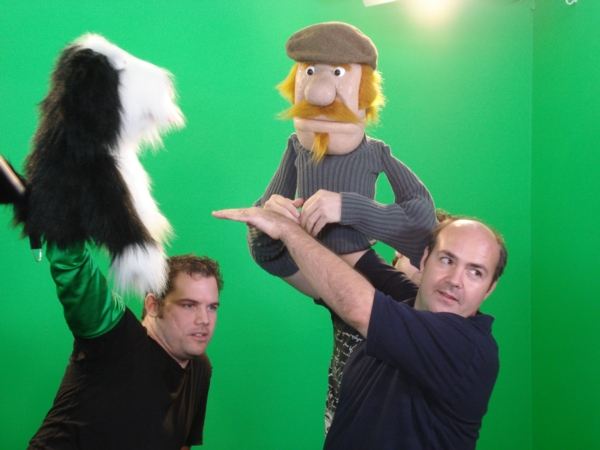 |
The release of The Sure Sheep will mark a major milestone for the partners of Hands In Art and begin to make their many other productions in development not just dreams, but reality. |
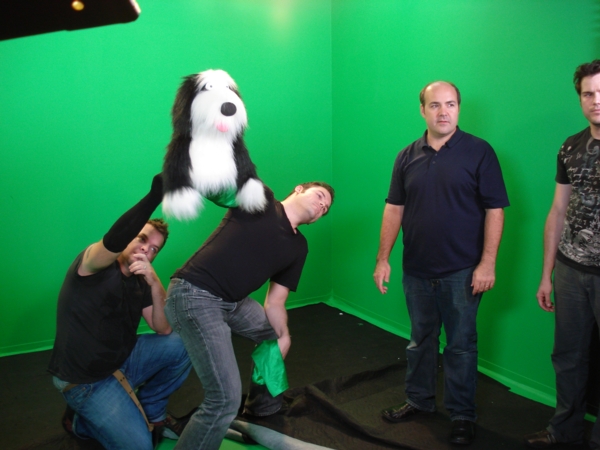 |
To read the story of The Sure Sheep and follow along with the story boards drawn by director John Kennedy please visit www.puppetkit.com/c/143 . |
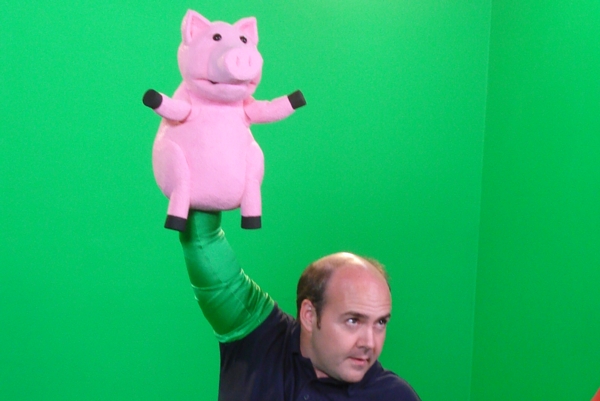 |
Hands In art, Inc. would like to thank all of the talented puppeteers that helped out on this film. Here is a list of the performers: Scotty Shoemaker, Tracie Mick-Shoemaker, Jamie Donmoyer, James Donmoyer, Scott Silson, James Silson, Rob Lott, Tony Whitten, Chris Iannuzzi, David Jordan, Kevin Frieburger, Billy Horne, Nicole Wilder, John Kennedy |
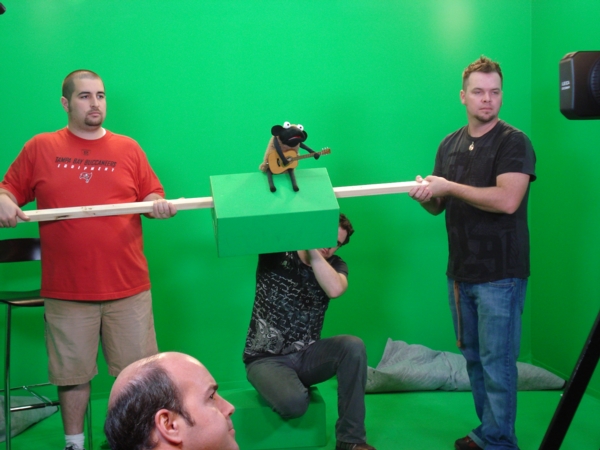 |
Here is a list of the crew on The Sure Sheep: Executive Producer-Heather Henson, Writer/Director/Producer-John Kennedy, Director of Photography/Effects Supervisor-Patrick Algermissen, Editor-Mike Lanza, Narration by Julie Kennedy-Rick, Puppet Builder-Nicole Wilder, Camera Assist/Voice Artist-Kevin McGuire, Lighting Design-Steve Lebree, Photography-Rick Baughn, Sign Design-Alicia Wilder, Sound Engineer-Micah Wilder, Songs written by John Kennedy and performed by Adam's Road, Scoring by Adam's Road (Matt Wilder, Steve Kay, Jay Graham, Joseph Warren, Nathanael Stone, Micah Wilder), Puppet Designs are from John Kennedy's Northlight Book "Puppet Planet" |
|
|

